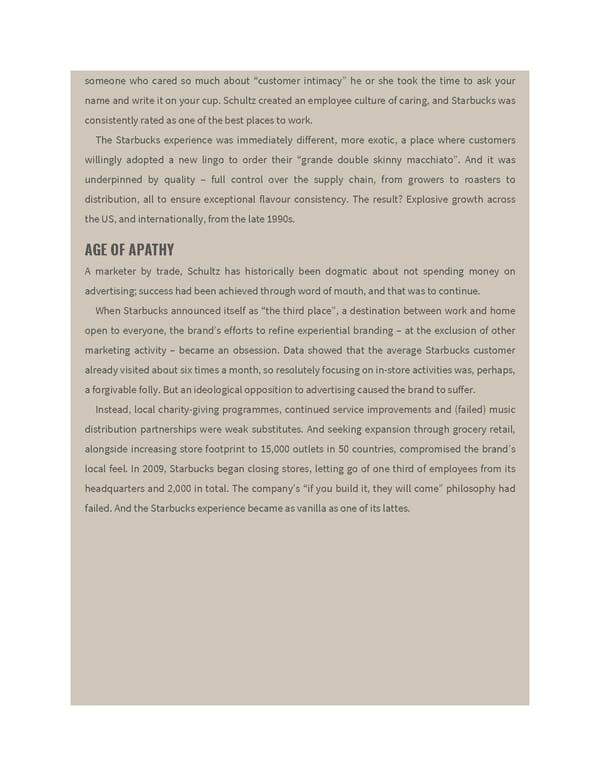someone who cared so much about “customer intimacy” he or she took the time to ask your name and write it on your cup. Schultz created an employee culture of caring, and Starbucks was consistently rated as one of the best places to work. The Starbucks experience was immediately different, more exotic, a place where customers willingly adopted a new lingo to order their “grande double skinny macchiato”. And it was underpinned by quality – full control over the supply chain, from growers to roasters to distribution, all to ensure exceptional flavour consistency. The result? Explosive growth across the US, and internationally, from the late 1990s. AGE OF APATHY A marketer by trade, Schultz has historically been dogmatic about not spending money on advertising; success had been achieved through word of mouth, and that was to continue. When Starbucks announced itself as “the third place”, a destination between work and home open to everyone, the brand’s efforts to refine experiential branding – at the exclusion of other marketing activity – became an obsession. Data showed that the average Starbucks customer already visited about six times a month, so resolutely focusing on in-store activities was, perhaps, a forgivable folly. But an ideological opposition to advertising caused the brand to suffer. Instead, local charity-giving programmes, continued service improvements and (failed) music distribution partnerships were weak substitutes. And seeking expansion through grocery retail, alongside increasing store footprint to 15,000 outlets in 50 countries, compromised the brand’s local feel. In 2009, Starbucks began closing stores, letting go of one third of employees from its headquarters and 2,000 in total. The company’s “if you build it, they will come” philosophy had failed. And the Starbucks experience became as vanilla as one of its lattes.
 Ogilvy on Advertising in the Digital Age Page 44 Page 46
Ogilvy on Advertising in the Digital Age Page 44 Page 46